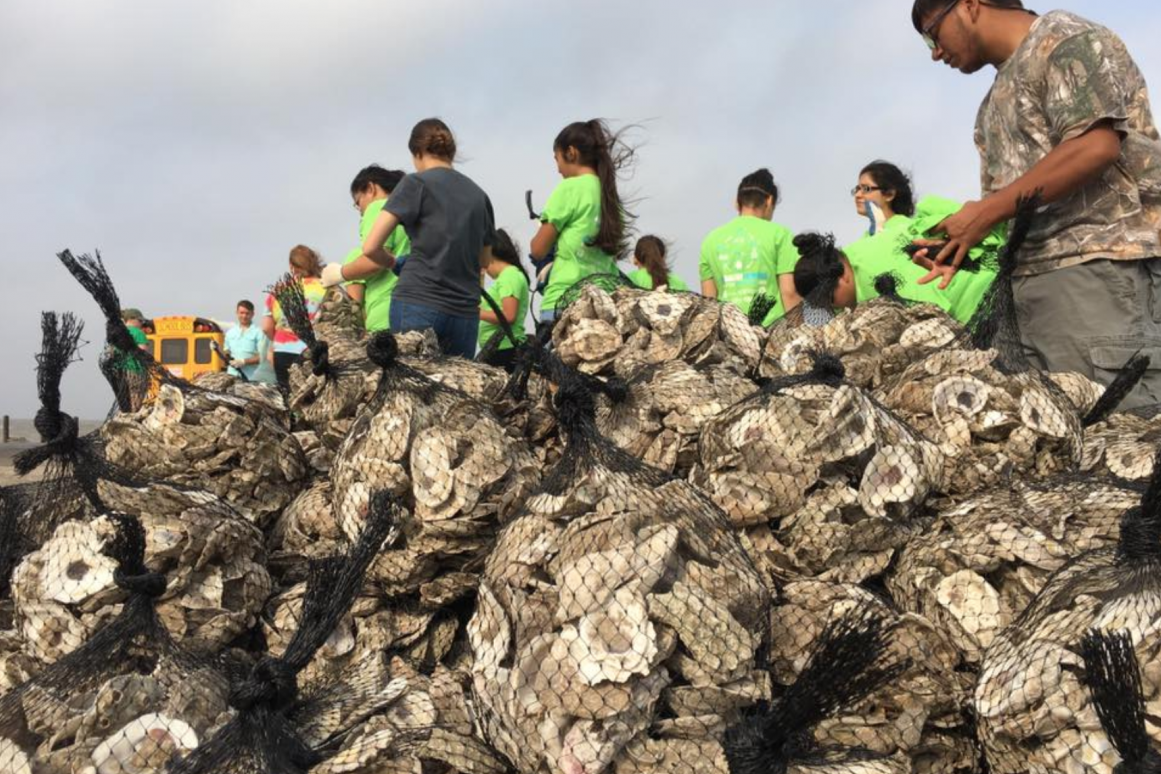Sink Your Shucks™ Oyster Recycling Program wins Coastal Stewardship award

CORPUS CHRISTI, Texas — Sink Your ShucksTM will be honored with a community conservation award from the Coastal Bend Bays Foundation (CBBF). The oyster recycling program, which gets community volunteers involved in the restoration of acres of lost reef habitat, is operated by the Harte Research Institute for Gulf of Mexico Studies and the Texas A&M University-Corpus Christi College of Science and Engineering.
CBBF announced the winners for their 15th Annual Conservation and Environmental Stewardship Awards this week, and winners will be honored at the group's annual banquet Dec. 7 at American Bank Center. CBBF’s Awards Program recognizes and honors outstanding Coastal Bend citizens, educators, businesses, governing bodies and other entities. The winners were chosen based on their significant contributions in the areas of habitat conservation, enhancement, protection, restoration or preservation of the Coastal Bend’s precious natural resources, or in educating the region’s youth and adults about the importance and value of their natural surroundings.
The Sink your ShucksTM program founders, HRI Chief Operating Officer Gail Sutton, TAMUCC Associate Professor of Marine Biology Dr. Jennifer Pollack, and HRI Endowed Chair for Ecosystems and Modeling Dr. Paul Montagna are being honored for their efforts to get the community involved in coastal conservation.
The oyster recycling program, founded in 2009, was the first in Texas that reclaims oyster shells from restaurants and returns them to our local waters, providing the base structures necessary to form new reefs and habitat for fish, crabs and other organisms. With the help of volunteers, Sink Your ShucksTM has restored about 14 acres of oyster reef in the Copano and Aransas Bays. Last year, the program celebrated its millionth pound of oyster shell rescued from the landfill to be repurposed as productive estuary habitat.
The program got its biggest test in August, when Category 4 Hurricane Harvey passed directly over the program's newly constructed St. Charles Bay Oyster Reef and Shoreline Stabilization project near Rockport. The 2,000 linear foot reef had just been installed as a living shoreline along the Big Tree unit in Goose Island State Park in late July, but miraculously, the restored reef was left completely intact. There was even a thin layer of oyster larvae, new growth called a “spat,” visible on the reef. Scientists continue to study the impacts of the hurricane on that project.
For more information on the Oyster Recycling Program visit their website at OysterRecycling.org.
